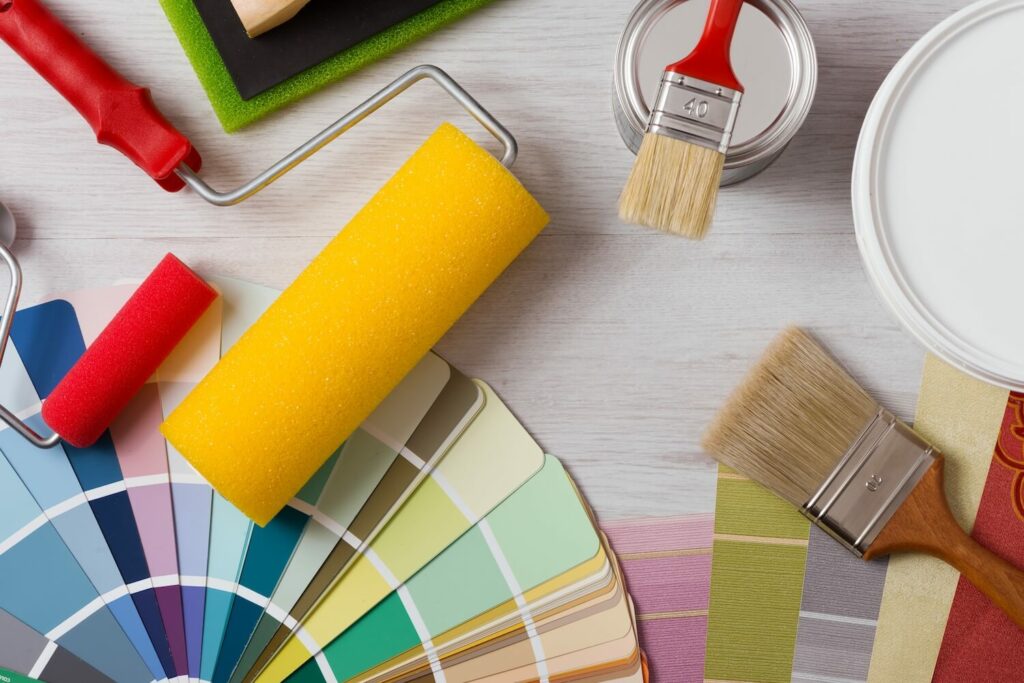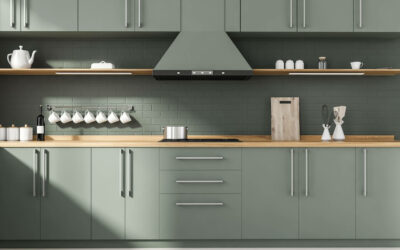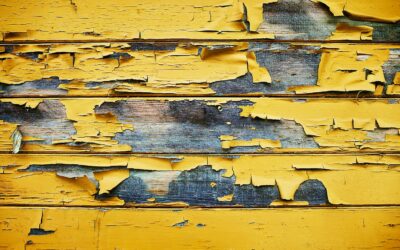
Painting your home’s interior can breathe new life into a space, transforming its ambiance and enhancing its appeal. Whether you’re looking to refresh the walls with a new coat of paint or embarking on a complete makeover, one of the crucial aspects to consider is the cost. Estimating interior painting costs requires careful planning and consideration of various factors. In this guide, we’ll delve into the essentials of budgeting for interior painting projects, offering insights and tips to help you achieve a flawless finish without breaking the bank.
Understanding the Basics
Before diving into job cost estimations, it’s essential to understand the fundamental aspects of interior painting projects. This includes factors such as the type of paint, the surface area to be painted, preparation requirements, and labor costs.
1. Type of Interior Wall Paint
The type of paint you choose significantly influences the overall cost of the project. Generally, there are two main categories of paint: latex (water-based) and oil-based (alkyd). Latex paints are more commonly used for interior projects due to their ease of application, quick drying time, and low odor. They also tend to be more affordable than oil-based paints. However, oil-based paints offer superior durability and are ideal for high-traffic areas or surfaces prone to moisture.
2. Wall Surface Area
The size of the area to be painted is a primary determinant of the overall cost. Measure the walls, ceilings, and any other surfaces accurately to determine the total square footage. This will help you estimate the amount of paint needed and provide a basis for calculating labor costs.
3. Painting Preparation Requirements
Proper surface preparation is crucial for achieving a flawless paint finish. This may involve tasks such as patching holes, sanding rough surfaces, cleaning walls, and applying primer. The extent of preparation required will vary depending on the condition of the existing surfaces. Factoring in these preparation tasks is essential for an accurate cost estimate.
4. Painters Labor Costs
The labor component of an interior painting project can vary significantly based on factors such as the complexity of the job, the skill level of the painters, and regional labor rates. Hiring professional painters ensures quality workmanship but comes at a higher cost than DIY painting. However, DIY painting requires time, effort, and skill, and mistakes can result in additional expenses for corrections.
Estimating Costs
Now that we’ve covered the basics, let’s delve into the process of estimating interior surface painting costs.
1. Calculate Paint Quantity: To determine the amount of paint needed, multiply the total square footage of the surface area to be painted by the number of coats required. Most paint manufacturers provide coverage information on their product labels, typically measured in square feet per gallon. Divide the total square footage by the coverage rate to estimate the number of gallons needed. It’s advisable to add a buffer of 10-20% to account for wastage and touch-ups.
2. Determine Paint Costs: Once you’ve calculated the quantity of paint required, research the cost of your chosen paint brand and type. Prices can vary based on factors such as quality, brand reputation, and specific features (e.g., washability, low VOC). Consider obtaining quotes from multiple suppliers or retailers to ensure you’re getting the best value for your money.
3. Factor in Additional Materials: In addition to paint, you’ll need various materials and supplies for the painting project, including brushes, rollers, painter’s tape, drop cloths, sandpaper, primer, and caulking. Make a list of these items and estimate their costs based on your specific requirements. Don’t forget to account for any equipment rentals if you’re tackling the project yourself.
4. Estimate Labor Costs: If you’re hiring professional painters, obtain quotes from reputable contractors or painting companies. Be sure to communicate the scope of the project clearly to ensure accurate pricing. Labor costs typically include prep work, painting, cleanup, and any additional services such as minor repairs or trim work. If you’re undertaking the painting yourself, consider the value of your time and the potential for mistakes that may require additional materials or professional intervention.
5. Account for Contingencies: It’s wise to set aside a contingency fund to cover unexpected expenses that may arise during the project. This could include unforeseen repairs, changes in project scope, or delays due to inclement weather. Aim to allocate around 10% of your total budget for contingencies to provide peace of mind and avoid budget overruns.
Tips for Saving Money
While painting your home’s interior can be a worthwhile investment, there are several strategies you can employ to reduce costs without compromising on quality.
1. Compare Prices
Take the time to shop around and compare prices for paint and supplies from different retailers. Look out for promotions, discounts, and bulk purchase deals that can help stretch your budget further. Consider purchasing paint in larger quantities if you have multiple rooms to paint, as this often works out more cost-effectively per gallon.
2. Prioritize
If you’re working within a limited budget, prioritize painting the most visible or frequently used areas of your home, such as the living room, kitchen, or master bedroom. You can always tackle less critical areas or rooms with less traffic at a later stage when finances allow.
3. Opt for Neutral Colors
While bold or trendy paint colors can make a statement, they may also limit the appeal of your home to potential buyers in the future. Opting for neutral hues such as white, beige, or gray not only provides versatility but can also save you money by reducing the need for multiple coats of paint.
4. Seek Recommendations
When hiring professional painters, seek recommendations from friends, family, or trusted online sources. Look for contractors with a proven track record of delivering quality workmanship and excellent customer service. Request references and testimonials to gauge the reliability and satisfaction levels of past clients.
5. Get Multiple Quotes
Don’t settle for the first quote you receive. Instead, obtain estimates from multiple painting contractors to compare prices and services. Be wary of significantly low bids, as they may indicate subpar workmanship or the use of inferior materials. Conversely, excessively high quotes may not offer commensurate value for money.
6. Maintain Proper Maintenance
After completing your interior painting project, ensure proper maintenance to extend the longevity of your freshly painted surfaces. Clean walls regularly with a mild detergent and soft cloth to remove dust, dirt, and stains. Promptly address any spills or accidents to prevent them from staining or damaging the paint finish. By maintaining your walls effectively, you can delay the need for repainting and save money in the long run.
7. Plan for Future Updates
As you budget for your interior painting project, consider the long-term implications and plan for future updates accordingly. Choose paint colors and finishes that have timeless appeal and can easily be updated with minor adjustments or accents. Investing in quality paint and professional application upfront can save you money on frequent repainting and touch-ups down the line.
Conclusion
Estimating interior painting costs requires careful consideration of various factors, from paint type and surface area to labor expenses and preparation requirements. By following the guidelines outlined in this guide and implementing cost-saving strategies, you can achieve a fresh, vibrant look for your home’s interior while staying within your budget. Whether you opt for a DIY approach or enlist the help of professionals, proper planning and attention to detail are essential for achieving brilliant results that enhance your living space and provide lasting satisfaction. With the right mindset and resources, you can embark on your interior painting project with confidence, knowing that you’ve budgeted wisely and maximized the value of your investment.
Read Other Blog Posts
From Drab to Fab: The Power of Professional Deck and Fence Staining Services
Decks and fences serve as...
Time is Money: How Hiring Professional Painters Saves You Both
In the fast-paced world we...
The Psychology of Color: How Paint Colors Affect Your Mood and Behavior
Colors have a profound impact...
Perfect Prep: Do You Need Professional Drywall Repair Before Painting?
Achieving a flawless paint job...
Advice: How to Choose the Perfect Color for Your Kitchen Cabinets
Choosing the right color for...
5 Signs It’s Time to Repaint Your Home: Don’t Ignore These Red Flags
Your home is more than just a...






